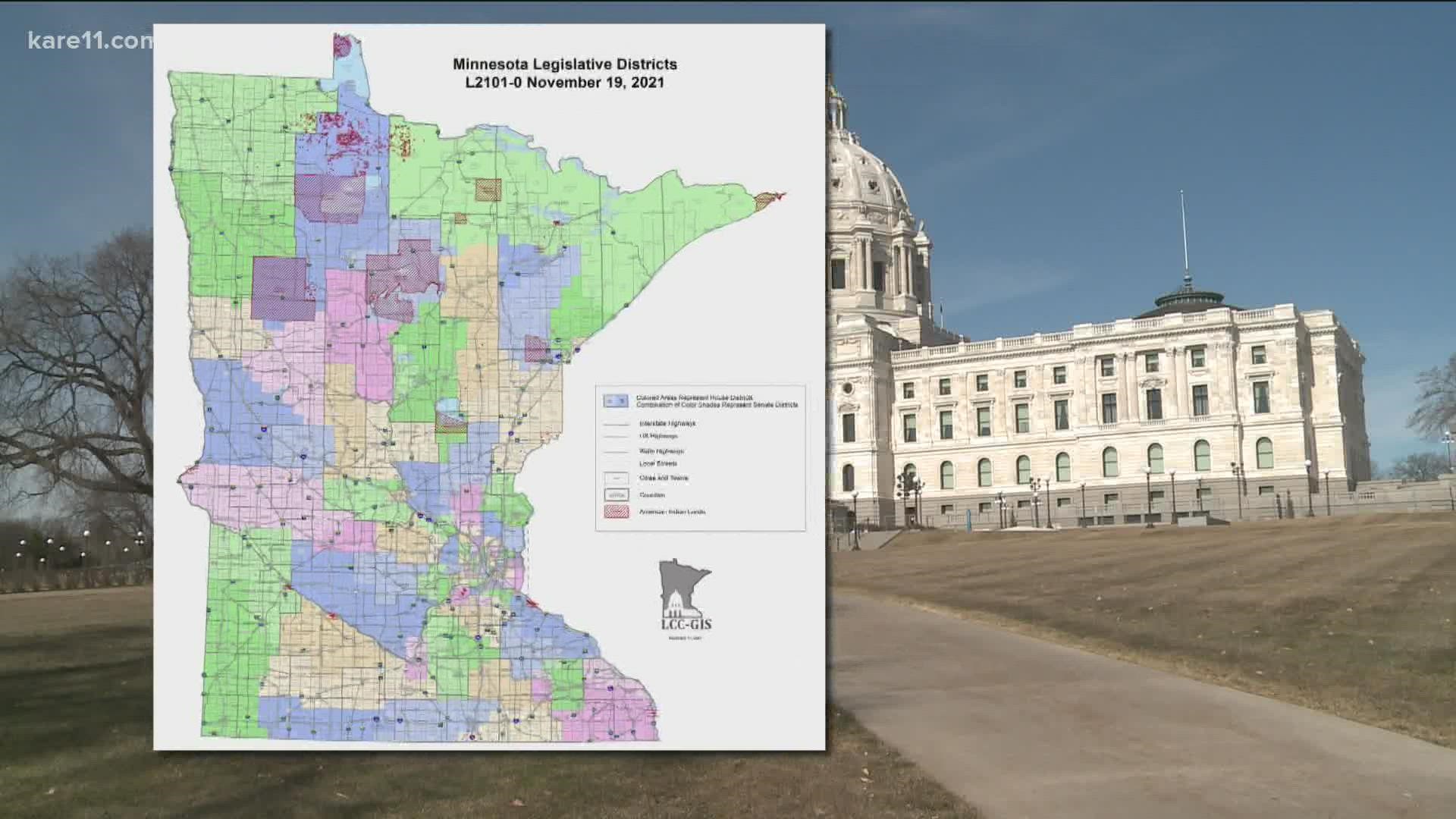ST PAUL, Minn. — Every new Census brings a daunting task for state lawmakers. They have to draw new legislative district boundaries to better reflect the new population data.
That means splitting the state into 134 House districts that each have roughly the same population, so that any person living in any district will have an equally loud voice in the legislature.
The target is to fit 42,586 people into each district, compared to the target of 39,000 per district a decade ago. And those new lines must be drawn in a way that won't give one party an unfair advantage over another.
"Our voters elect the members. The members do not get to choose who their voters are, except by where they live," Rep. Mary Murphy, a Hermantown Democrat who's in the midst of her 23rd term in House, told reporters Friday.
Rep. Murphy chairs the special redistricting panel that released a first draft of the new district maps Friday. The committee's been poring over the new Census data for months, holding hearings and sitting in on hearings hosted by the Minnesota State Courts system.
"The maps revealed today shows that every district had to change," Murphy explained. "Many districts had to grow by many, many miles and some districts were condensed, and some districts have completely new numbers."
Lawmakers face a Feb. 15 deadline to agree on new district borders. If they can't, which is a likely scenario in the state's divided legislature, the maps will be drawn by the courts. That's exactly how it has played out for decades in Minnesota, and several lawsuits are already underway to force the hand of the court system.
That deadline is even more difficult this time around because the COVID pandemic delayed the 2020 Census and the release of district-by-district population numbers. Those detailed sets of data weren't available until October wasn't available until this October, eight months later than in previous decades.
"We’ve taken the time to learn from experts, to read from case law, and to attend bipartisan conferences held by the National Conference of State Legislatures," Rep. Ginny Klevorn, a Plymouth Democrat who is vice chair of the committee, told reporters.
"And most importantly we’ve listened to Minnesotans."
Leveling out the numbers
Minnesota's population grew from 5.3 million in 2010 to 5.7 million in 2020, according to the Census Bureau. But that growth wasn't equally distributed.
The big headcount showed some legislative districts have gained population since 2010, while others have lost people. The goal of redistricting is to even that out by drawing new lines.
Rep. Klevorn's own House district, District 44A, grew by 10,000, so it now has roughly 7,000 persons over the target population of 42,586 per district.
"About 6,868 residents would have to go into another district in order for the current district to reach the ideal population," Klevorn explained.
"That population growth has a ripple effect on all the districts around it."
Her suburban district isn't the most out of whack example out there.
The most overpopulated House district is 60B in northeast Minneapolis, which now has 52,579 residents. That's 9,993 people more than the target population for a House District. Rep. Mohamud Noor currently represents 60B.
On the other extreme is House District 28A in the Winona area, which now has 37,245 residents. That's 5,338 people below the ideal population for a House district. Rep. Gene Pelowski Jr. represents that district.
Whenever district borders are moved some lawmakers end up living in the same districts as fellow lawmakers. It happened again this time. That will add extra pressure on the committee to revise the map released Friday.

